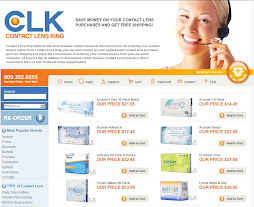Did you know that our eyes breathe? In a sense they do, as they take oxygen from the air, diffuse it via our tears over the cornea, and even dispatches carbon dioxide into the air—much the same way as our normal inhaling/exhaling process. Corneas (the clear window at the front of the eye) have no blood vessels to feed them, so they require adequate amounts of oxygen to remain healthy and stave off infections and complications that threaten vision.
When not enough oxygen reaches the cornea, symptoms such as discomfort, redness, dry eyes, and blurred vision occur. Extreme oxygen deficiency may result in permanent dry eye, clouding of the cornea (corneal dystrophy) and, in the most severe cases, the need for a corneal transplant.
In the world of contact lenses, oxygen flow or permeability has always been a concern for eye doctors and manufacturers. Any lens, especially in their early years, automatically became a barrier to oxygen upon insertion. Making sure that the cornea was not deprived of too much oxygen meant that contacts were not to be worn over a certain period of time. Yet, manufacturers continued to grapple with the problem of coming up with a lens that would allow longer wear and adequate oxygen supply.
The problem began to be solved with the advent of soft contact lenses, and their ability to absorb water. Water content in lenses beats the barrier ‘handicap’ by permitting oxygen and carbon dioxide to pass through. This factor was further enhanced when silicone hydrogel contacts came onto the market. Silicone is porous by nature and facilitates even higher amounts of oxygen to be transmitted. In addition to providing healthier eyes, silicone hydrogels are more comfortable for those who had tolerance issues with lenses in the past.
These oxygen transmissible lenses have expanded to treat a wide array of vision conditions. Comfort and health can now be had by those not only with near- and farsightedness, but also astigmatism, presbyopia, and dry eye. Convenience has also been addressed with the range of wear times—30 days right down to a single day; the latter due to daily disposables, which eliminate the need for cleaning and storing lenses. With all this innovation it is no wonder soft contacts represent approximately 90% of all lens sales, as eye doctors have confidence in their ability to deliver comfort and healthy levels of corneal oxygen.
Wearers today have more soft contact lens choices, not only in brands and modalities, but also in where to buy them—online sellers being the most convenient in many cases.
Consult your eye doctor to find out which soft contact lens may be right for you. You’ll breathe easier…and so will your eyes.
Friday, November 18, 2011
Breathing Eyes and Contact Lenses
Subscribe to:
Post Comments (Atom)





No comments:
Post a Comment